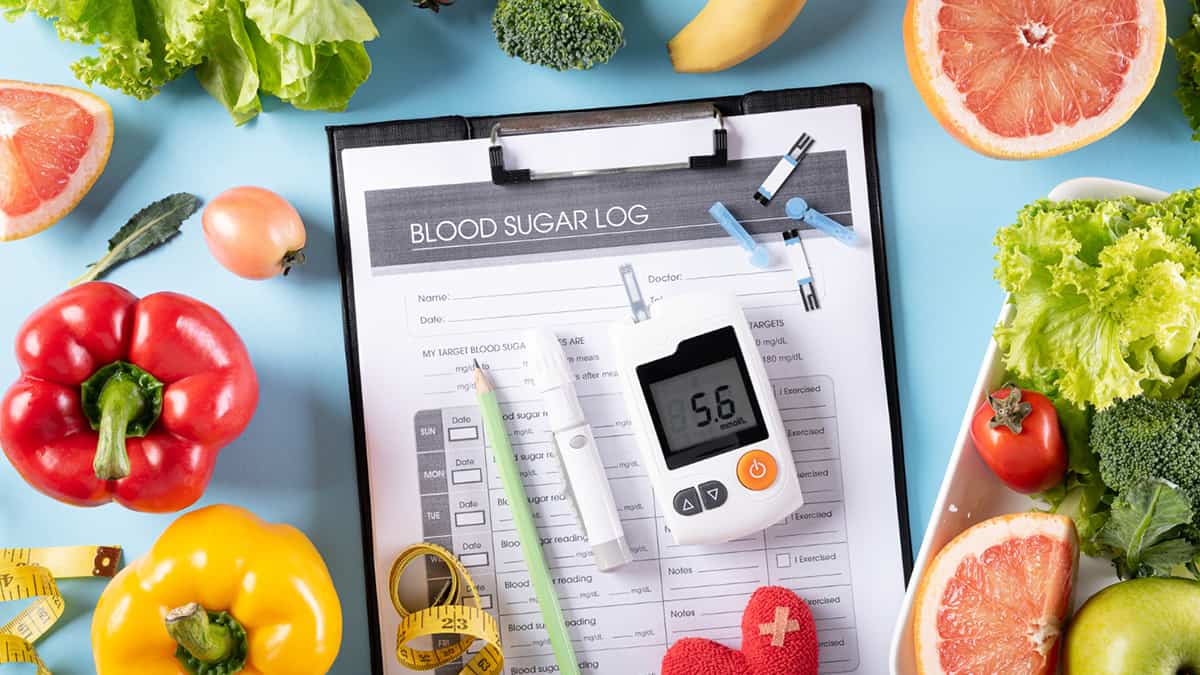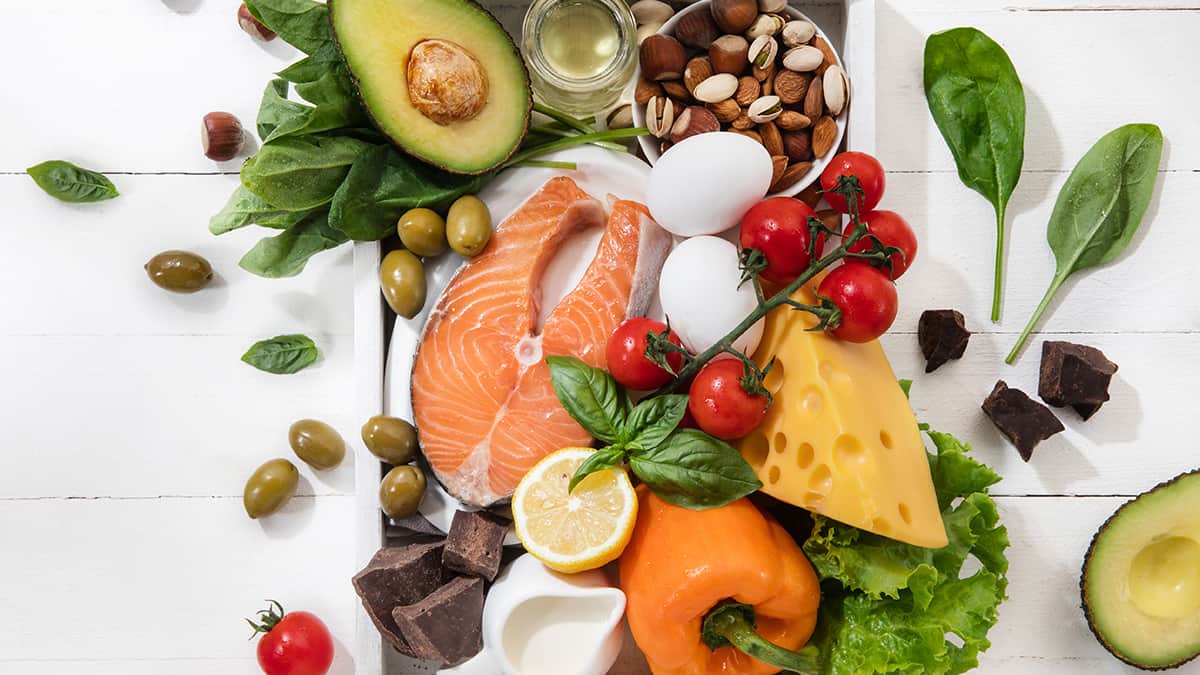Superfoods Part 4: Essential Superfoods for Diabetics and Pre-Diabetics
Nutrition

This article is part of my series on superfoods. Learn more about superfoods, superfoods for weight loss, and critical superfoods for a healthy heart. Stay tuned for more to come in this series.
Diabetes occurs when the body can’t process carbohydrates and sugars as well as it should. The foods that we eat can play a big role in preventing and managing this condition. Turning to superfoods is a great, nutritious way to get your metabolism working more efficiently.
Is Diabetes Something You Need to Be Concerned About?
The older you get, the higher your risk for developing chronic conditions such as diabetes, so it’s important to learn more about how to protect your health and wellness as you age.
There are a few different types of diabetes. Type 1 diabetes is a condition that you are usually diagnosed with when you are younger, although this is changing as there are many adults who have a new diagnosis of this type of diabetes. People with this disease cannot make any insulin, a hormone that helps the body use sugar as fuel. People with type 2 diabetes may produce some insulin, but their body does not use the insulin hormone very well. Additionally, gestational diabetes is a third form of this disease that may be diagnosed when a person is pregnant. All of these forms of diabetes cause a person to have high levels of blood sugar, which can damage the body and lead to further health problems down the road.
It’s also important to be aware of a condition of elevated blood sugar that does not meet the criteria for a diagnosis of “diabetes.” This condition is sometimes called “prediabetes”. People with this condition have slightly elevated blood sugar levels, and have a higher chance of developing type 2 diabetes, heart disease, or stroke. While one out of every three Americans has “prediabetes”, the vast majority of them don’t know it! For this reason and many other reasons, it is very important to get your blood sugar checked at regular physical exams so that you have a better idea of whether you may be at risk and to get the information you need to stay healthy.
Risk Factors for Diabetes
If you have any of the following factors, your risk of getting type 2 diabetes may be higher:
- You have prediabetes
- You are overweight or obese
- You are at least 45 years old
- You have a close family member, such as a parent or sibling, who was diagnosed with type 2 diabetes
- You don’t get very much exercise
- You are Black, Hispanic or Latino, Native American, or Alaska Native
Controlling Your Diabetes Risk
If you want to reduce your chances of being diagnosed with diabetes, you can make some lifestyle changes. Getting more physical activity and losing extra weight is a great place to start. Additionally, if you eat a more nutritious diet, you can better control your blood sugar levels. This can help you prevent or manage diabetes.
Superfoods are a great way to eat better. There isn’t one official definition that says which foods count as “superfoods,” but in general this label is given to foods that are jam-packed with nutrients that your body needs in order to stay healthy. Many superfoods can help keep your body’s blood sugar levels in a more normal range.
Superfoods for Better Blood Sugar Levels

The foods you eat have a big effect on how stable your blood sugar levels are. Certain food choices are better than others when it comes to avoiding high blood sugar spikes or low blood sugar crashes.
Why Is Controlling Blood Sugar Levels Important?
When we eat food, the body breaks down carbohydrates into smaller sugar molecules, which enter the bloodstream. For most people, the pancreas makes insulin and sends it around the body. Insulin then helps the cells in different organs absorb sugar from the blood and convert it into energy. After a meal, blood sugar levels rise temporarily and then eventually go back to normal as sugar is removed from the blood.
In people with diabetes, who don’t make or cannot use insulin, cells can’t absorb sugar. These sugar molecules stay in the blood for longer periods of time, and often reach high levels. Additionally, diabetes makes a person more likely to have blood sugar levels that get too low if they miss a meal, take too much medication, or exercise a lot.
The Glycemic Index
Overall, the goal is to keep blood levels stable. You can do this by paying attention to the glycemic index of the carbohydrates that you eat.
Foods that contain carbohydrates include grains (bread, cereal, pasta, rice), fruits and fruit juices, starchy vegetables (potatoes, corn, peas), dairy products, foods with fiber (beans and lentils), sugary desserts and snacks, and sugary drinks.
The glycemic index (GI) is a number that rates all carbs on a scale from 0 to 100. Low GI foods:
- Take longer for the body to break down, and require your body to actually work harder to break down these types of foods
- Cause your blood sugar to rise slowly and steadily
- Give you longer-lasting energy
- Make you feel full for a longer period of time
On the other hand, high GI foods:
- Increase your blood sugar levels very quickly, and then rapidly drop those blood sugar levels back down to low levels
- Make you crave more carbohydrate-rich foods once your blood sugar levels plunge
- Make you more likely to overeat or to eat when you are not truly hungry
When people with diabetes eat mostly low GI foods, they have better control over their blood sugar levels. One of the reasons many superfoods are so good for you is because they have a low GI.
Whole Grains
Whole grains, as opposed to refined or processed grains, contain high levels of fiber. Fiber is a type of complex carbohydrate that has a low GI. Your body can’t completely break down fiber, so it doesn’t make your blood sugar levels increase as much. People who eat high levels of fiber have a lower chance of becoming diabetic. In particular, people who eat at least three servings of whole grains per day have a 20-30% lower chance of getting diabetes.
When people with diabetes eat low GI, whole grain foods on a regular basis, they also have lower levels of inflammation. This can help fight obesity, high blood pressure, and heart disease, and help the body become more responsive to insulin.
Most whole-grain foods can be considered a superfood, not only because of their fiber content, but also because of their high levels of B vitamins, iron, zinc, magnesium, and antioxidants. Examples of whole grains are:
- Whole-wheat pasta, or baked goods like bread or crackers made with whole-wheat flour
- Brown rice
- Grains often served for breakfast, such as steel-cut oats, stone-ground grits, or amaranth
- Grains that are often prepared as sides, such as quinoa, barley, millet, or bulgur
- Popcorn
Low GI Superfood Fruits
Some superfood fruits have a low GI, while other potentially less healthy fruits have a higher GI. A fruit’s GI is primarily based on how much fiber the fruit contains. Some fruits have more fiber, and therefore, a lower GI.
Eating low GI fruit helps people with diabetes lower their blood sugar and blood pressure levels. Examples of low GI fruits are:
- Apples
- Pears
- Oranges, grapefruit, tangerines, and other citrus fruits
- Berries such as strawberries, blueberries, raspberries, and cranberries
- Peaches
- Plums
- Nectarines
Berries may also provide diabetics with additional benefits. They contain antioxidants that have shown the ability to improve insulin and cholesterol levels, and are linked to a lower likelihood of developing diabetes.
To get the maximum amount of fiber from your fruits, try strategies like:
- Eating whole fruits rather than drinking fruit juice. Juice has had most of the fiber removed, and often has added sugars, meaning that it has less nutrients and a higher GI.
- Avoiding fruit products like canned fruits that contain added sugar.
- Eating fruit with the skin on, if it’s edible.
The Power of Legumes
Legumes – beans, lentils, and peas – are superfoods that offer a ton of nutritional benefits. They also contain high levels of fiber, making them a good low GI food option. Other nutrients found in legumes include:
- Protein
- B vitamins
- Copper
- Iron
- Magnesium
- Manganese
- Zinc
- Phosphorus
In one study of over 100 people with diabetes, those who ate at least one cup of legumes per day had lower blood sugar levels and a reduced chance of developing heart disease.
However, despite these health benefits, on any given day only about 8% of Americans say they eat legumes. Get more of these superfoods by adding black beans, kidney beans, chickpeas, cannellini beans, pinto beans, soybeans, and lentils to your meals.
Other Superfoods for Diabetics

In addition to eating more low GI foods, people with prediabetes or diabetes can make other dietary changes. There are many more nutritious superfoods that can be beneficial to people watching their blood sugar levels.
Fatty Fish
While many different types of seafood can be a part of a healthy diet, fish with a high fat content are typically the only ones to receive the “superfood” label. This is because these fish contain the highest levels of omega-3, a healthy form of fat.
Omega-3’s are great for the heart. This is especially good news for diabetics, who have a higher chance of heart disease and stroke. There is some evidence that omega-3’s may also help prevent other health conditions, including certain types of cancer and Alzheimer’s disease, although research has found conflicting results.
When diabetics eat fatty fish on a regular basis, their bodies can better control blood sugar levels. However, this result is not seen when people with diabetes or elevated blood sugar levels eat large amounts of lean, non-fatty fish.
Fatty superfood fish include:
- Salmon
- Mackerel
- Tuna
- Herring
- Sardines
Eggs
This superfood is a great way to start your day. Eggs may help with weight loss, which is important for preventing and managing diabetes. Scientific studies have found that eggs can:
- Help people feel more full after a meal
- Lead people to eat fewer calories for the next 24 hours
- Help people lose more weight
Eggs can also specifically help with diabetes. When diabetic folks eat two eggs per day, they tend to have lower cholesterol, blood sugar, insulin, and blood pressure levels. Replacing a carb-heavy breakfast with eggs may be a good way to improve the way your body processes food.
Leafy Greens
While these veggies do contain a small amount of carbohydrates, they are considered a low GI food and won’t significantly change blood sugar levels. Additionally, leafy green vegetables provide a lot of vitamin C, which is particularly important for people with diabetes.
Spinach, kale, chard, and other leafy greens also contain antioxidants like lutein and zeaxanthin, which can improve eye health. It’s important for people with diabetes to take care of their eyes, because they are more likely to have eye problems.
Yet another nutrient provided by leafy green superfoods is vitamin K. This key vitamin can help the body make better use of insulin, reduce inflammation, and decrease diabetes risk.
Tree Nuts
Tree nuts, including almonds, walnuts, pistachios, cashews, hazelnuts, and pecans, have low levels of carbohydrates. They also contain some of the same nutrients as many of the other foods on this list, including protein, fiber, and omega-3’s.
Scientific research has found that tree nuts can help people with diabetes in several ways:
- When nuts are eaten along with carbohydrates, the blood sugar doesn’t spike as much as when carbohydrates are eaten alone.
- Some research has shown that nuts can decrease appetite and calm inflammation.
- A clinical trial found that eating a lot of almonds every day led to lower cholesterol, insulin, and blood sugar levels.
- When people with diabetes ate walnut oil every day in one study, they had better blood sugar levels.
- A study of over 16,000 diabetics found that people who ate more tree nuts were less likely to have heart disease.
Yogurt
Eating this superfood may be a good way to stave off diabetes. Research has found that people who eat 80-125 grams of yogurt per day are 14% less likely to develop this health condition. In particular, dairy products with high levels of protein may be extra effective at preventing diabetes. Eating Greek yogurt gives you more protein per serving, and often contains less sugar, too.
Other fermented superfoods, including kefir, sauerkraut, and kimchi, may also help prevent diabetes. These foods supply the body with healthy bacteria that can help improve the body’s metabolism.
Conclusion
People with diabetes need to be especially careful to make sure that the foods they eat aren’t causing problems with blood sugar levels. Many superfoods can help by keeping these levels more stable and helping the body better respond to insulin. Whether you’re worried about developing diabetes in the future, or are trying to manage this condition right now, eating more superfoods every day can give you better health benefits.
See your physician to see how to incorporate these SUPERFOODS into your daily routine!